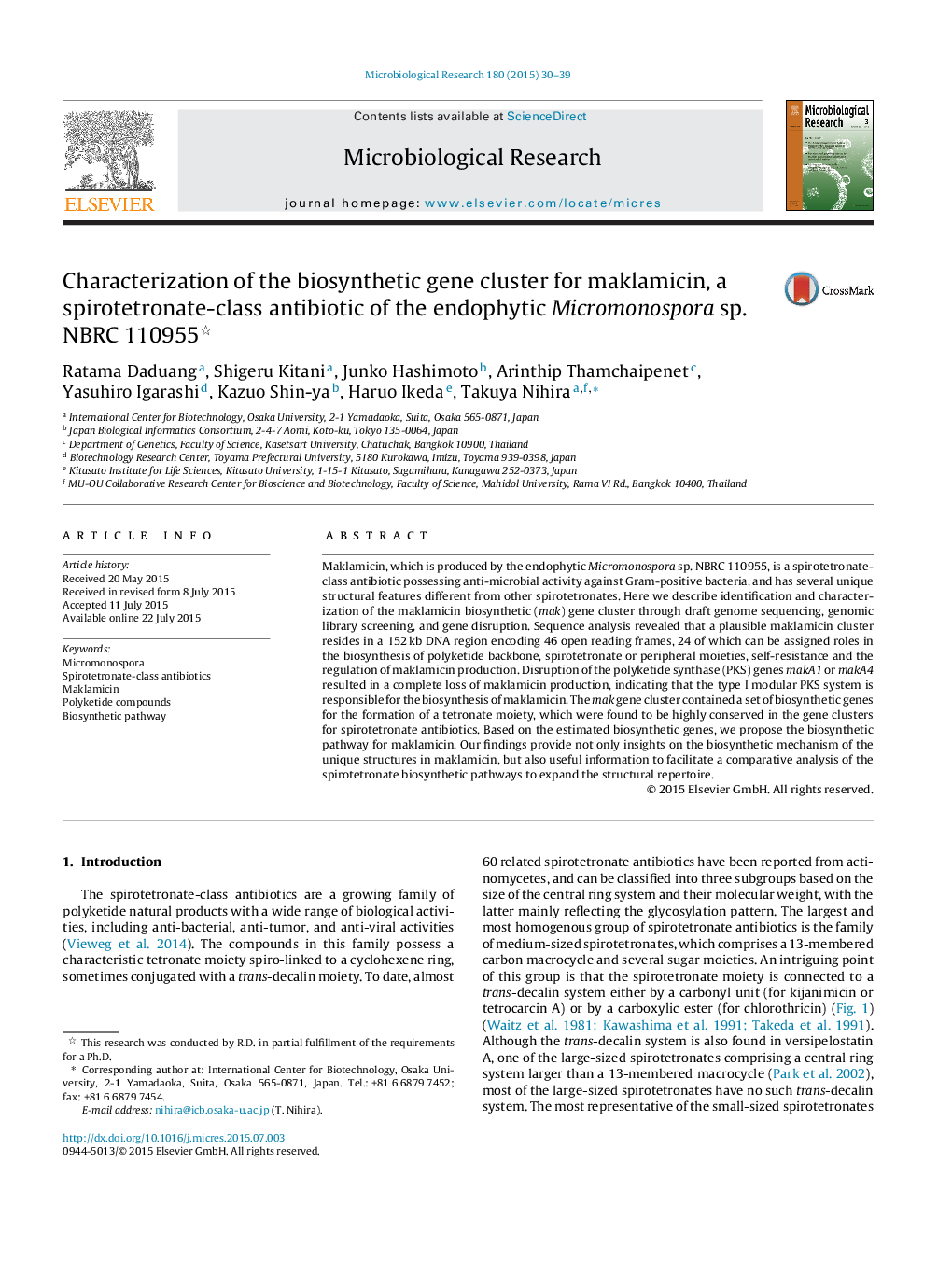| Article ID | Journal | Published Year | Pages | File Type |
|---|---|---|---|---|
| 2091971 | Microbiological Research | 2015 | 10 Pages |
Maklamicin, which is produced by the endophytic Micromonospora sp. NBRC 110955, is a spirotetronate-class antibiotic possessing anti-microbial activity against Gram-positive bacteria, and has several unique structural features different from other spirotetronates. Here we describe identification and characterization of the maklamicin biosynthetic (mak) gene cluster through draft genome sequencing, genomic library screening, and gene disruption. Sequence analysis revealed that a plausible maklamicin cluster resides in a 152 kb DNA region encoding 46 open reading frames, 24 of which can be assigned roles in the biosynthesis of polyketide backbone, spirotetronate or peripheral moieties, self-resistance and the regulation of maklamicin production. Disruption of the polyketide synthase (PKS) genes makA1 or makA4 resulted in a complete loss of maklamicin production, indicating that the type I modular PKS system is responsible for the biosynthesis of maklamicin. The mak gene cluster contained a set of biosynthetic genes for the formation of a tetronate moiety, which were found to be highly conserved in the gene clusters for spirotetronate antibiotics. Based on the estimated biosynthetic genes, we propose the biosynthetic pathway for maklamicin. Our findings provide not only insights on the biosynthetic mechanism of the unique structures in maklamicin, but also useful information to facilitate a comparative analysis of the spirotetronate biosynthetic pathways to expand the structural repertoire.
